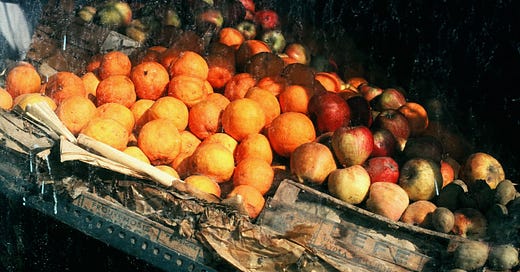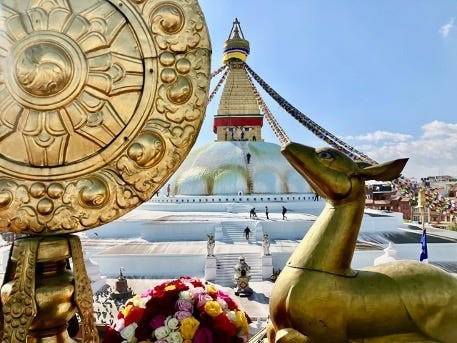My friend Lisa and I meet every other Monday evening for a bottle of rosé (see last post for the dangers of rosé!), and talk about the political scene, the human condition (she’s a therapist), and our most recently admired books, films, TV, and podcasts. Last week she told me abou the Good Life Project, hosted by Jonathan Fields. Lisa had been inspired by Field’s July 21 podcast, in which he quoted the uncanny, inimitable writer
:“My time here is short. What can I do most beautifully?”
Figuring out what we do most beautifully isn’t always easy. Fields gives a cute example: “If you think you’re a composer of string quartets—but when you play your string quartets everyone goes to sleep. In consolation, you pick up your accordion and start playing a polka, and everybody dances… Well, there it is.”
For me, the things I’ve done most beautifully (or felt I have) have changed throughout my life. In my mid-20s, I searched for beauty through the visual arts and photography (the five images in this section are from my ancient portfolio of Kodak slides). But somewhere in there—probably in 1983 and 1984, as I made my way to Nepal on a Rotary Journalism Fellowship—I began to reach for a more subtle kind of beauty through the crafts of writing and storytelling.
For many of us this week, the flawless expertise of Olympian gymnast Simone Biles and the breathtaking synchro diving event were clear-cut examples of people doing what they do most beautifully. But beauty doesn’t have to be something we showcase externally. For someone like Fields, it’s a quality. His notion is “to be a dad as beautifully as I can, to be a husband as beautifully as I can, to be an adult child to aging parents and a loving brother as beautifully as I can.”
So, Dear Reader: Our time here is short. What can we do most beautifully?
I’d like you to answer that question, if you can ... So, I’m opening the comments section to all readers (not just paid subscribers) as an invitation to join me in this meditation. And as an intro to what follows, listen to “Say a Prayer for Beauty,” a song by the radiant singer/songwriter Noe Venable from her album The Summer Storm Journal.
Parkinson’s, like the “they” in Noe’s song, keeps trying to tear beauty apart. My inner image of my performative self—how I look, how I move, what I say—was my standard reference point, the ground from which I believed I could cultivate my outer self most beautifully. But all of those powers ultimately break down. Not just in me; in all brains, given enough time.
“The Japanese term for the beauty of things that are incomplete, worn out, or impermanent is wabi-sabi,” brain surgeon Katrina Firlik told me, “And although I can appreciate the wabi-sabi nature of an old piece of furniture, with its chipped paint and random dents, or the natural, wrinkled face of a well-aged man or woman, I still have trouble with the wearing out of the human brain.”
Katrina Firlik is a neurosurgeon, an author, an artist, and a Buddhist. In 2007, I wrote a profile about her for Tricycle: The Mindful Scalpel.
“The brain is a part of nature,” Firlik said. “Degradation and disease are natural processes. Even so, it’s hard to develop a calm acceptance of the fragmentation of the human mind. It’s hard to find any beauty in it. I sometimes wonder if a good deal of suffering could be curtailed if a brain—like a Tibetan sand mandala—could be swept up and sent out to sea, in a thoughtful and respectful ceremonial fashion, before the intricate design has a chance to fragment too far.”
But like a Tibetan sand mandala, our physical brain points to something more ethereal, more complex. And as my Parkinson’s progresses (slowly, Inshallah), it will be from that deeper place that my own answers to Saunder’s question must arise. Maybe I can’t be a beautiful stage performer, or outdoorsman, or lover—but I can be a more beautiful friend, a more beautiful son and brother, a more beautiful writer. As an elderly but athletic woman I met on a trail in the Grand Tetons said to me: “I’ll do what I can do while I can do it—then I’ll do something else.”
To reference another song—”Let Go,” by Frou Frou—can there be “beauty in the breakdown?” Maybe so. Maybe there will be. Let’s see.
And finally, a note of (not entirely shameless) self-promotion:
Many of you know about my close relationship with Nepal; three of my seven books are set there. Every November, the marvelous writing coach Laurie Wagner, Buddhist poet James Hopkins and I offer a creative immersion into the art and culture of the Kathmandu Valley. It’s an extraordinary, potentially life-changing experience in a place alive with ritual, color, and architectural marvels. Our group size is limited, but we welcome creatives of every stripe. If you’re interested in learning more about our November 2024 journey, take a deeper look at the Himalayan Writers Workshop.
That’s it, folks. Thanks for reading.









One of my favorite things to do beautifully is to interact with “strangers.” I love to connect briefly with a clerk in the store or laugh about something that we passing strangers notice together on the sidewalk. I don’t want to intrude, or demand attention for too long., just create a beautiful moment that acknowledges we’re here together and I see them. It brings me real joy, a little zing in my day, so I hope that they receive that joy beautifully.
I was reminded of the Japanese term Kintsugi, which is mending broken things (mostly pottery) with gold. I think your newsletter is a good example.